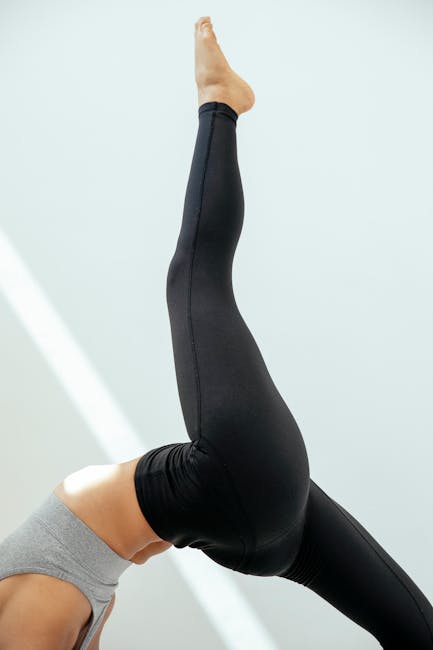I. Introduction
Mindfulness, at its core, is the practice of being fully present and engaged in the current moment. It’s about paying attention to our thoughts, feelings, bodily sensations, and the surrounding environment without judgment. Mindfulness encourages us to live in the present, rather than dwelling on the past or anticipating the future. It’s a simple concept, but it’s not always easy to achieve, especially in our fast-paced, multitasking world.
The practice of mindfulness has its roots in Buddhist meditation, but it has been adopted and popularized in the West by mental health professionals who recognize its benefits for overall well-being. Today, mindfulness is used as a therapeutic technique in psychology, and it’s also a popular tool for managing stress and enhancing personal growth.
Practicing mindfulness in daily life is essential for several reasons. It helps us to slow down, to reconnect with ourselves, and to appreciate the richness of our experiences. It also allows us to respond to life’s challenges with more calmness and clarity, rather than reacting impulsively or getting overwhelmed by emotions. Building a resilient mindset is one of the key benefits of mindfulness.

Photo by Daniel Torobekov on Pexels
II. Benefits of Practicing Mindfulness
Practicing mindfulness can bring about a host of benefits, including improved mental well-being, reduced stress and anxiety, enhanced focus and concentration, and increased self-awareness and emotional intelligence. Let’s delve into these benefits in more detail.
- Improved mental well-being: Mindfulness can help us to cultivate a more positive mindset, to appreciate the good things in life, and to deal with negative emotions in a healthier way. It can also enhance our sense of self-worth and self-acceptance.
- Reduced stress and anxiety: By focusing on the present moment, mindfulness can help us to let go of worries and fears, to relax our mind and body, and to manage stress more effectively. It can be particularly beneficial for people with obsessive-compulsive disorder or attention-deficit hyperactivity disorder.
- Enhanced focus and concentration: Mindfulness trains our brain to stay focused on one thing at a time, which can improve our attention span, memory, and cognitive abilities. It can also boost our productivity and performance in various tasks.
- Increased self-awareness and emotional intelligence: Mindfulness encourages us to tune into our inner world and to understand our thoughts, feelings, and behaviors better. This increased self-awareness can lead to greater emotional intelligence, which is key for building healthy relationships and achieving personal and professional success.
III. Techniques for Practicing Mindfulness
There are many ways to practice mindfulness, and different techniques work for different people. Here are some popular mindfulness techniques that you can try:
- Mindful breathing exercises: This is a simple yet powerful technique that involves focusing on your breath as it goes in and out. It can be done anywhere, anytime, and it’s a great way to calm your mind and body.
- Body scan meditation: This involves paying attention to different parts of your body, from your toes to your head, and noticing any sensations, tensions, or discomfort. It’s a good way to connect with your body and to release physical stress.
- Mindful eating: This involves eating slowly and savoring each bite, while paying attention to the taste, texture, and aroma of the food. It can enhance your enjoyment of food and help to prevent overeating.
- Walking meditation: This involves walking slowly and mindfully, while paying attention to the sensation of your feet touching the ground, the rhythm of your breath, and the sights and sounds around you. It’s a good way to combine mindfulness with physical activity.
- Mindful journaling: This involves writing about your thoughts, feelings, and experiences in a non-judgmental way. It’s a good way to process your emotions and to gain insights into yourself.
IV. Incorporating Mindfulness into Daily Routine
While it’s beneficial to have a dedicated mindfulness practice, such as daily meditation, it’s equally important to incorporate mindfulness into your everyday activities. Here are some ways to do that:
- Creating a dedicated mindfulness practice: This could be a daily meditation session, a regular yoga practice, or any other mindfulness activity that you enjoy. Having a dedicated practice can help to establish mindfulness as a habit and to deepen your mindfulness skills.
- Mindfulness in everyday activities: You can practice mindfulness while doing everyday tasks, such as washing dishes, brushing your teeth, or commuting to work. Simply focus on the task at hand and try to stay present and engaged.
- Mindfulness in relationships: You can practice mindfulness in your interactions with others, by listening attentively, expressing your feelings honestly, and being fully present. This can enhance your relationships and make your interactions more meaningful.
- Mindfulness at work or school: You can practice mindfulness at work or school, by focusing on one task at a time, taking regular breaks to relax and recharge, and managing your stress in a healthy way.
V. Overcoming Challenges in Mindfulness Practice
Like any new habit, mindfulness practice can come with its own set of challenges. However, with patience, persistence, and the right strategies, you can overcome these challenges and reap the benefits of mindfulness. Here are some common challenges and how to deal with them:
- Dealing with distractions and wandering thoughts: It’s normal for your mind to wander during mindfulness practice. Instead of getting frustrated, simply notice the distraction and gently bring your focus back to the present moment.
- Finding motivation and consistency: It can be hard to stay motivated and consistent in your mindfulness practice, especially in the beginning. Setting realistic goals, tracking your progress, and celebrating your achievements can help. Check out our post on increasing motivation for more tips.
- Managing expectations and embracing imperfections: Mindfulness is not about achieving perfection or getting rid of negative thoughts. It’s about accepting yourself as you are, with all your imperfections. Be patient with yourself and remember that progress is more important than perfection.
- Seeking support and guidance: If you’re struggling with your mindfulness practice, don’t hesitate to seek support and guidance. This could be a mindfulness coach, a therapist, or a supportive community. You can also find plenty of resources online, including mindfulness apps, books, and courses.

Photo by Miriam Alonso on Pexels
VI. Conclusion
In conclusion, practicing mindfulness can bring about numerous benefits, including improved mental well-being, reduced stress and anxiety, enhanced focus and concentration, and increased self-awareness and emotional intelligence. Whether you choose to practice mindful breathing, body scan meditation, mindful eating, walking meditation, or mindful journaling, the key is to stay present and engaged in the moment.
We encourage you to start incorporating mindfulness into your daily life, whether it’s through a dedicated mindfulness practice, mindfulness in everyday activities, mindfulness in relationships, or mindfulness at work or school. Remember, mindfulness is not a destination, but a journey of self-discovery and personal growth.
Finally, we want to leave you with this thought: The transformative power of mindfulness lies not in the practice itself, but in how it changes our relationship with ourselves, with others, and with the world around us. So, why not start your mindfulness journey today and see how it can transform your life? Discover the power of meditation and mindfulness with us.
Tags: #mindfulnesspractice, #mindfulmoments, #presentmoment, #selfcarejourney, #mindfulawareness





Pingback: Muse Brain Sensing Headband: Transform Your Mindfulness And Meditation